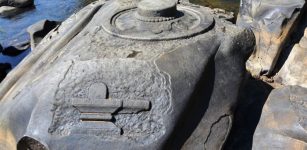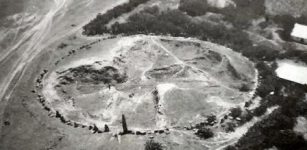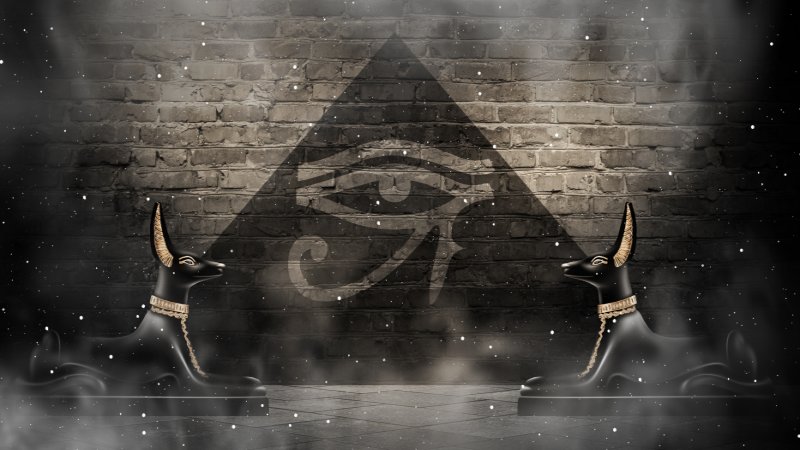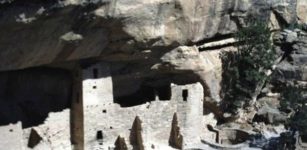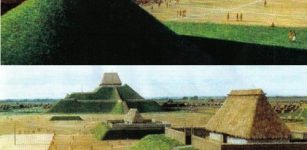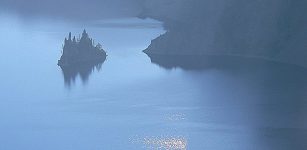Unique Massive ‘Nazca of Kazakhstan’ Geoglyphs In Central Asia
MessageToEagle.com – In 2007, a sensational discovery of 9 gigantic geoglyphs in the south of Kostanay (Kostanai) region, Torgay (Torgai) steppes, Kazakhstan, attracted wide attention of scientists and ufologists.
These unique geoglyphs can only be seen from a great height, so they can compete with the Nazca Lines in Peru.
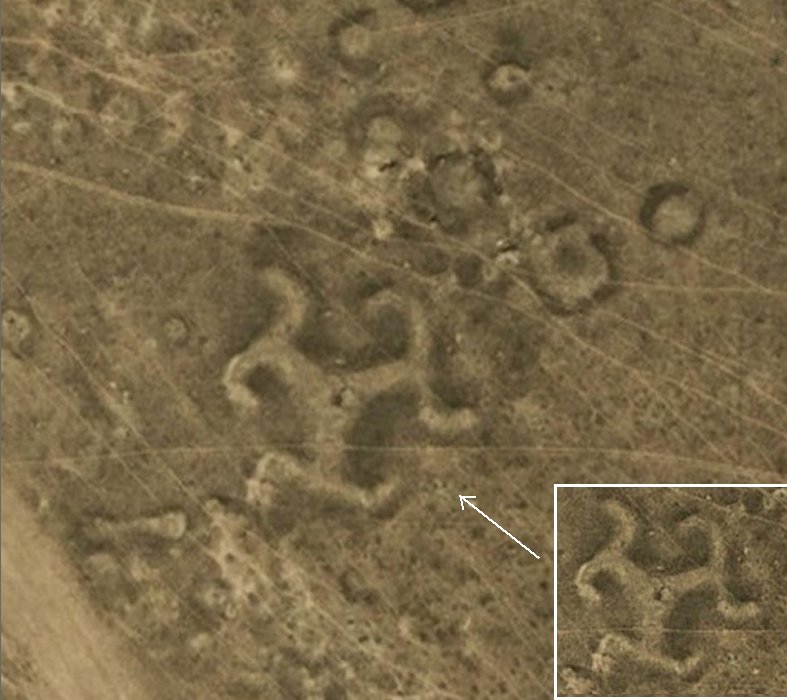
According to archaeologist Dmitry Dey, the 9 nine gigantic objects were discovered in 2007.
They are perfectly visible on Google Earth satellite images, and the only thing that distinguish these “drawings on the ground” from the Nazca Lines – is that Kazakhstan geoglyphs are “made of mounds and barrows and exceed them in size”.
The largest object discovered in the area is the so-called “Ushtogaysky square”.
“Its size and accuracy of geometric shapes just amaze. The size of this square is 287 meters, i. e. 25% of the base of the Cheops pyramid.
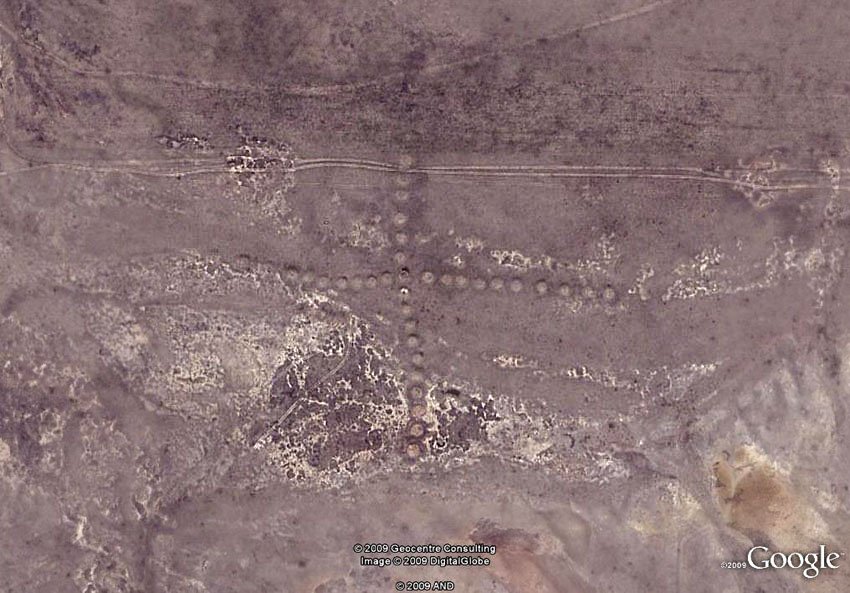
It consists of 101 mounds. The 101st one is located in the center, on each side are 15 barrows and 10 barrows in each half-diagonal,” said Dmitry Dey, who worked in the area at the time.
“Just imagine this was done on a large area of 83 sq m. We do not know how many people and hours were spent to create such monument.”
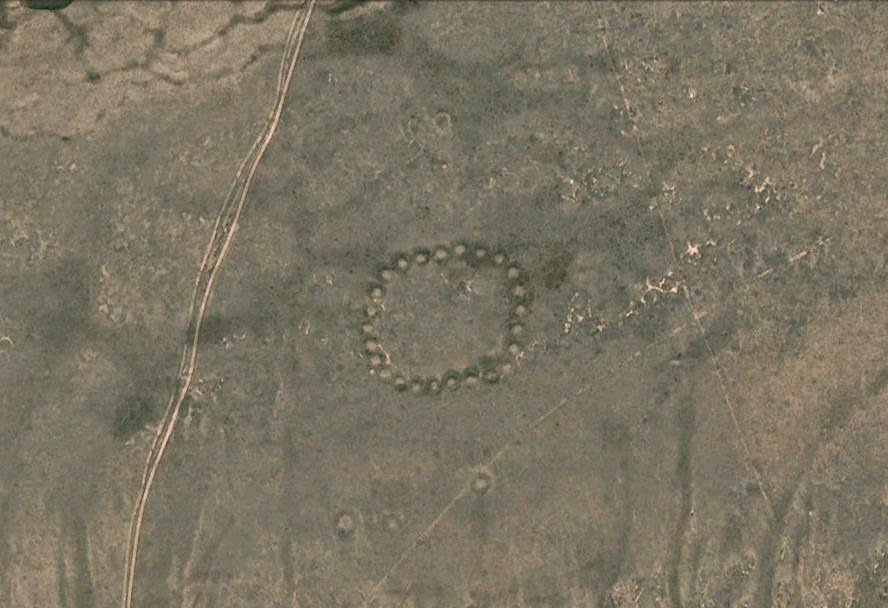
Another object is Torgay (Torgai) three-fold swastika of 90 meters in diameter.
However, the soil in this area is different and the object’s condition is very bad. Among other impressive geoglyphs are the Big Ashi-Tastinsk and Ekindynsk crosses, as well as flat circles.
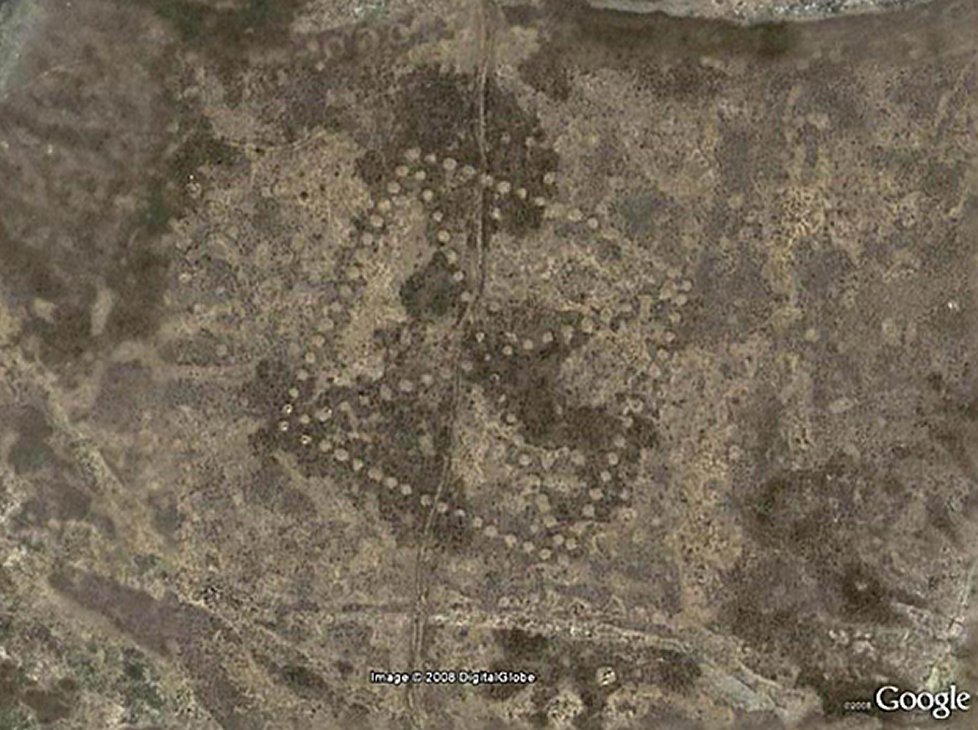
According to article by China Topix, using Google Earth gives archaeologists an opportunity to analyze huge geoglyphs easily – “man-made patterns formed out of mounds or ditches — sprawling across the northern steppe of the Central Asian nation of Kazakhstan.
Clearly seen from the air but barely noticeable on the ground, the glyphs come in an array of patterns ranging from simple squares, rings, and crosses to more complicated swastikas and triskeles (a three-armed spiral).
Also, like the Nazca Lines, some of the Kazakh glyphs are huge: One measures 1,312 feet in diameter, longer than modern-day aircraft carriers.”
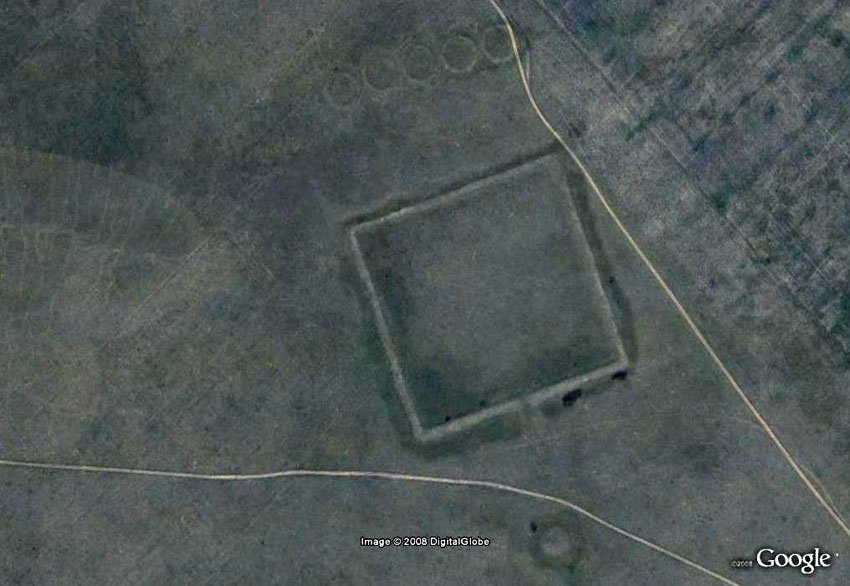
For now, the purpose of the ancient earthwork patterns in Kazakhstan is unclear, but at the moment, there are over 50 confirmed and all of them are the work of ancient people.
Another earthwork, the swastika, for example, is an ancient symbol often attributed to the Sun, and is still used in Buddhist sects today. Triskeles were favored by the Celts in their art and coinage.
See also:
Arkaim: A Scientific Enigma Of Anomalous Zone
Central Asia’ s territory is dotted by several mysterious earthen constructions whose age stretches deep into prehistory. Burial mounds called kurgans are found across the Asian steppe into Europe, and are at least as old as the 4th century BC.
The village of Arkaim, for example, found just beyond the Kazakh border in the southern foothills of the Urals in Russia is dated to the 20 BC.
The surveying and exploration of the Kazakh geoglyphs continue in the region.
Copyright © MessageToEagle.com. All rights reserved. This material may not be published, broadcast, rewritten or redistributed in whole or part without the express written permission of MessageToEagle.com.
source:


